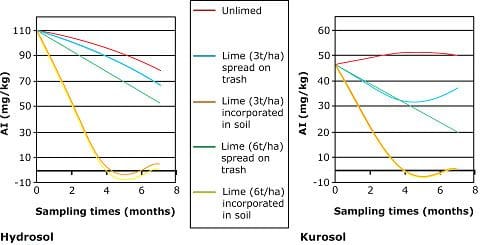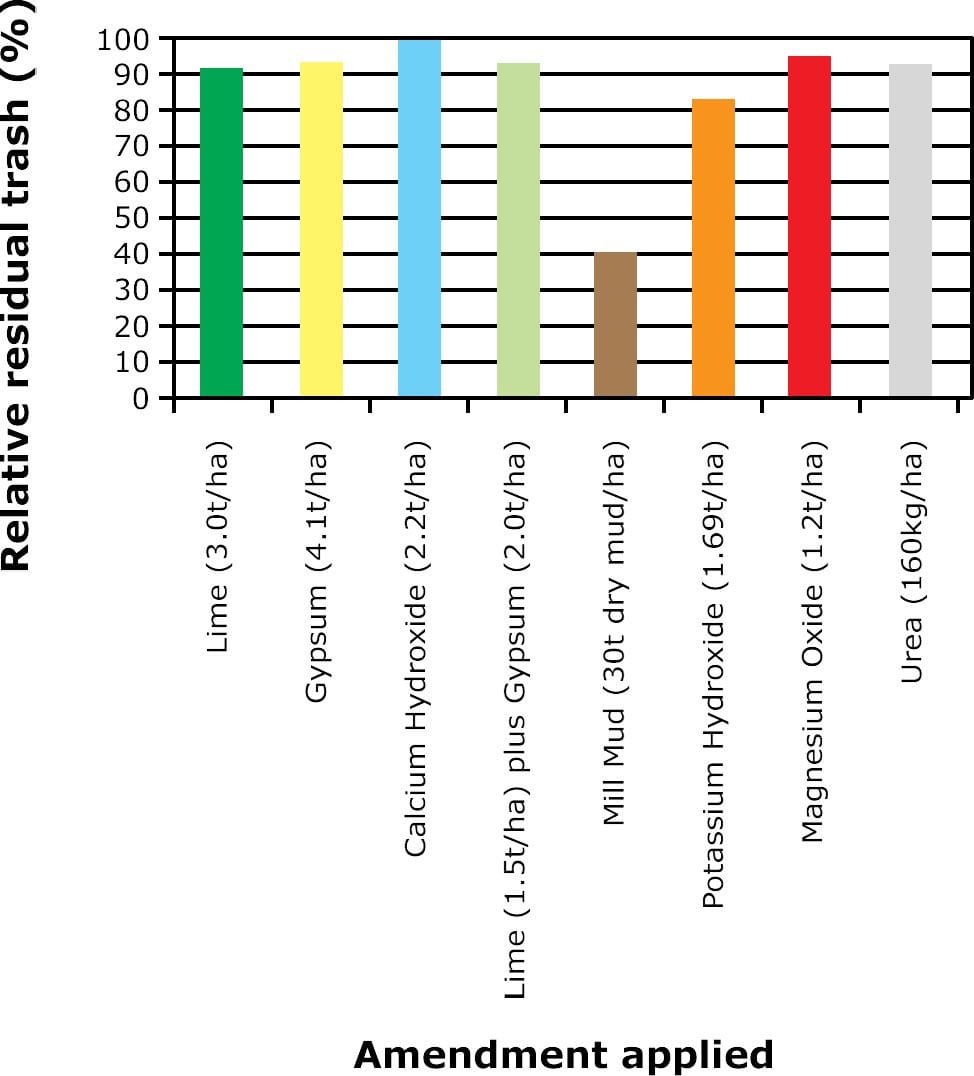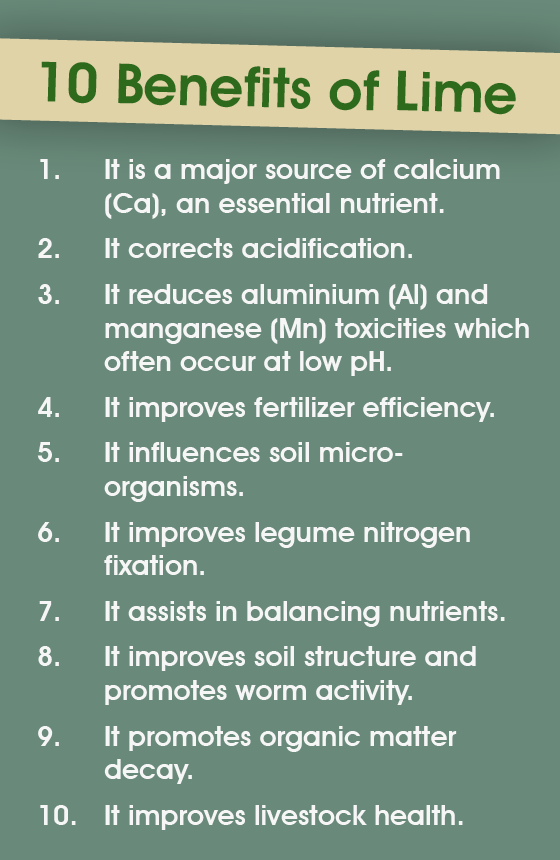A.W. Wood1, 4, B.L. Schroeder2, 4 and R.L. Aitken3, 4
1. CSR Technical Field Department, PMB 4, Ingham, Qld.
2. Bureau of Sugar Experiment Stations, Private Bag 4, Bundaberg DC, Qld.
3. Bureau of Sugar Experiment Stations, Clarence River, NSW.
4. CRC for Sustainable Sugar Production, James Cook University, Qld.
Abstract
Calcium amendments such as lime and gypsum are commonly used to ameliorate soil acidity and sodicity. The effect of these and other amendments on the decomposition of trash (sugarcane crop residues after harvest) was investigated on a range of sugar industry soils. Data from glasshouse pot experiments conducted on five different soil types indicated that certain amendments applied to the surface of sugarcane trash had a significant effect on trash decomposition. Relative to unamended trash, the application of mill mud (a by-product from the sugar milling process) most successfully enhanced the rate of trash decomposition. Of the other amendments considered, significant differences in trash decomposition were also obtained when lime (pure CaCO3 at 3 tonnes ha-1), a combination of lime and gypsum (1.5 and 2.0 tonnes ha-1), potassium hydroxide (1.7 tonnes ha-1) and urea (160 kg ha-1) were applied to the surface of the sugarcane trash. Soil and amendment type had a significant interactive effect on soil pH.
Keywords
Sugarcane, trash decomposition, calcium amendments, soil amelioration.
Introduction
Green cane harvesting and the retention of unburnt crop residues as a surface trash blanket has been widely adopted in the Australian Sugar Industry. The advantages of retaining sugarcane crop residues as a trash blanket have been well documented (Wood, 1991) and the benefits arising from the cycling of nutrients from green cane trash blanketing are currently being investigated (Mitchell and Larsen, 2000). However, little is known about the effects of applying calcium-containing amendments to sugarcane trash on soil properties. A series of glasshouse experiments were initiated to investigate the effects of a range of possible amendments on trash decomposition on different sugarcane soils. The results may have important applications particularly in situations where trash is slow to break down or where trash retention has been implicated in the increased acidification of surface soil horizons.
Methods
Three glasshouse experiments were conducted to investigate the effects of a range of possible amendments on the decomposition of trash on different sugarcane soils. In the first experiment, which was a pilot investigation, two acidic topsoils (a Hydrosol and Kurosol) were used. Soil (50mm deep), either unamended or amended with lime, was placed in trays and wet to field capacity. A 50mm thick blanket of cane trash was added to each tray. Lime was applied at rates of 0, 3 and 6 t ha-1 to the surface of the trash or incorporated into the soil prior to spreading the trash. Field moisture capacity was maintained by evenly spraying water onto the surface of the trash in each tray to predetermined masses. Trays were destructively sampled after four and seven months. The undecomposed trash, the 0-10mm soil/decomposed trash layer and the 10-50mm soil layer were separately sampled.The extent of decomposition of the trash was evaluated by measuring the dry mass of remaining trash.
Subsequent to this pilot investigation, two randomised pot trials with two replicates were established, one at the Department of Natural Resources (DNR) glasshouse at Indooroopilly (10-30oC) and the other at CSR Macknade Mill at Ingham in a warmer environment (15->40oC). The Indooroopilly trial consisted of 5 different topsoils: a Hydrosol (Coolum), a Kurosol (Yandina), a Humic Podosol (Nambour), a Dermosol (Ingham) and a Vertosol (Ayr). The Macknade trial included a Rudosol (river levee soil) and a Tenosol (flood plain alluvial soil) from the Herbert sugarcane area as well as the Kurosol and Dermosol soils used in the Indooroopilly experiment for cross referencing purposes.
In both trials, soil (80mm deep) was placed in square containers and partitioned into different depth intervals (0-10, 10-20, 20-50 and 50-88mm below the soil surface) using plastic coarse meshed grids. With the exception of the treatments without trash, effectively 40t ha-1 of air-dried trash was applied to the soil surface in each container. Various amendments were then spread on the surface of the trash (Table 1). The pots were regularly watered twice weekly at average rates of 300ml and 500ml at Indooroopilly and Macknade respectively. The pots were destructively sampled after 7 months.
Table 1. List of amendments included in the Indooroopilly and Macknade pot trials.
| Treatment | Amendment and equivalent rate |
|---|---|
| 1 | Calcium carbonate (3.0t ha-1) |
| 2 | Calcium sulphate (4.10t ha-1) |
| 3 | Calcium hydroxide (2.22 t ha-1) |
| 4 | Calcium carbonate (1.5t ha-1) + calcium sulphate (2.05t ha-1) |
| 5 | Mill mud* (30t dry mud ha-1) |
| 6 | Potassium hydroxide (1.68t ha-1) |
| 7 | Magnesium oxide (1.2t ha-1) |
| 8 | Urea (160 kg N ha-1) |
| 9 | Calcium carbonate (3.0t ha-1), No trash |
| 10 | No amendment, Trash only (40 t ha-1) |
(* Mill mud is a by-product from sugar mills containing lime, organic matter and a range of nutrients)
Results and discussion
In the first experiment, the sampling after 4 months indicated that lime had a significant effect on trash decomposition, but the extent of decomposition was dependent on the method of lime application and the soil type. Spreading lime on the surface of the trash layer enhanced decomposition. However, the sampling after 7 months showed that the differences in residual trash had markedly narrowed for both soils and no significant differences existed between treatments. This effect was similar for both soils (data not shown here).
As expected, incorporating lime into the soil in this first experiment increased soil pH in both the 0-10mm and 10-50mm layers. Spreading lime onto the trash layer also resulted in marked increases in soil pH values in the surface soil (0-10mm), but although there was evidence of small pH increases after seven months in the 10-50 mm soil layer (from the application of lime onto the surface of the trash), these differences were not significant. However, the substantially lower exchangeable Al values associated with the 10-50mm soil layer at four and seven months (Figure 1) was evidence that some amelioration had occurred due to the application of lime to the surface of the trash. Based on this preliminary data, it would appear that the interaction between lime application and trash may have important implications for the amelioration of sub-surface soil acidity in minimum tillage systems.
The application of certain amendments had a significant effect on trash decomposition as reflected in the amount of residual trash (%) relative to unamended trash in both replicated pot trials. The data from the Indooroopilly experiment is shown as Figure 2. However the extent of decomposition depended on both soil type and amendment applied. Filter mud most successfully improved trash decomposition on all soils. Although the application of calcium carbonate (lime), potassium hydroxide, and a combination of lime and calcium sulphate (gypsum) all appeared to enhance decomposition, they were more effective on some soils than others. Whereas urea increased trash decomposition on the acid soils, it was ineffectual on the high pH Vertosol (data not shown). Variable results were obtained with the application of gypsum, magnesium oxide and calcium hydroxide.

Figure 1. Extractable Al values of the 10-50mm soil depth as influenced by lime application and time.

Figure 2. Residual trash (relative to unamended trash) associated with the application of various amendments seven months after application (average for all soils). LSD (p=0.05) = 6.6%.
Soil type, treatment and depth below the trash layer had a significant interactive effect on soil pH in the Indooroopilly experiment (Figure 3). To illustrate this effect, selected treatments only are presented - control (no trash, no amendment), trash (no amendment), surface applied lime (no trash), lime on trash, and mill mud on trash. As expected, the surface applied lime increased soil pH across the five soil types. This was most pronounced in the surface layers and generally declined with depth. The presence of a trash blanket (in the absence of any amendments) had variable effects on soil pH. While surface applied trash appeared to increase the pH of the Kurosol (Soil 1) and the Humic Podosol (Soil 3), it had little or no effect on soil pH in the Hydrosol (Soil 1) and the
Dermosol (Soil 5), possibly due to their higher buffering capacity. In contrast the presence of trash resulted in a decrease in soil pH in the Vertosol (Soil 4). The addition of lime to the surface of the trash layer also resulted in variable effects. In soils 1, 3 and 5, the effect on soil pH was either similar or less than that of surface applied lime (no trash). However, in the case of the Kurosol, lime application to the trash blanket resulted in higher pH values in the sub-surface layers than when lime was applied in the absence of trash. This has important implications for certain acid soils where amelioration of sub-surface layers can be enhanced by this interaction of lime and trash, possibly due to more soluble organo-calcium complexes.
Mill mud application to the surface of the trash layer resulted in some amelioration of the subsurface layers. Although the effect was not as pronounced as that with lime, the trends noted encourage further investigation, particularly in view of the enhanced decomposition rates reported earlier.

Figure 3. The interactive effect of soil type, treatment and depth on soil pH. LSD (p=0.01) = 0.46.
Conclusions
Calcium amendments such as lime and mill mud have potential in accelerating the decomposition of sugarcane trash and in ameliorating sub-surface soil acidity in minimum tillage systems. The enhanced decomposition is probably due to increased microbial activity or under increased pH conditions. This could have important implications for the sugar industry given the problems encountered with green cane trash blanketing in cool, wet areas and the widespread degradation of soil fertility due to accelerated soil acidification with sugarcane monoculture.
Acknowledgments
The authors thank the Sugar Research and Development Corporation and the CRC for Sustainable Sugar Production for support and Lee Aitken for his contribution to the experimental work.
References
1. Mitchell, R.D.J. and Larsen, P.J. 2000. Proceedings of the Australian Society of Sugarcane Technologists, 22, 212-216.
2. Wood, A.W. 1991. Soil & Tillage Res. 20, 69-85.




